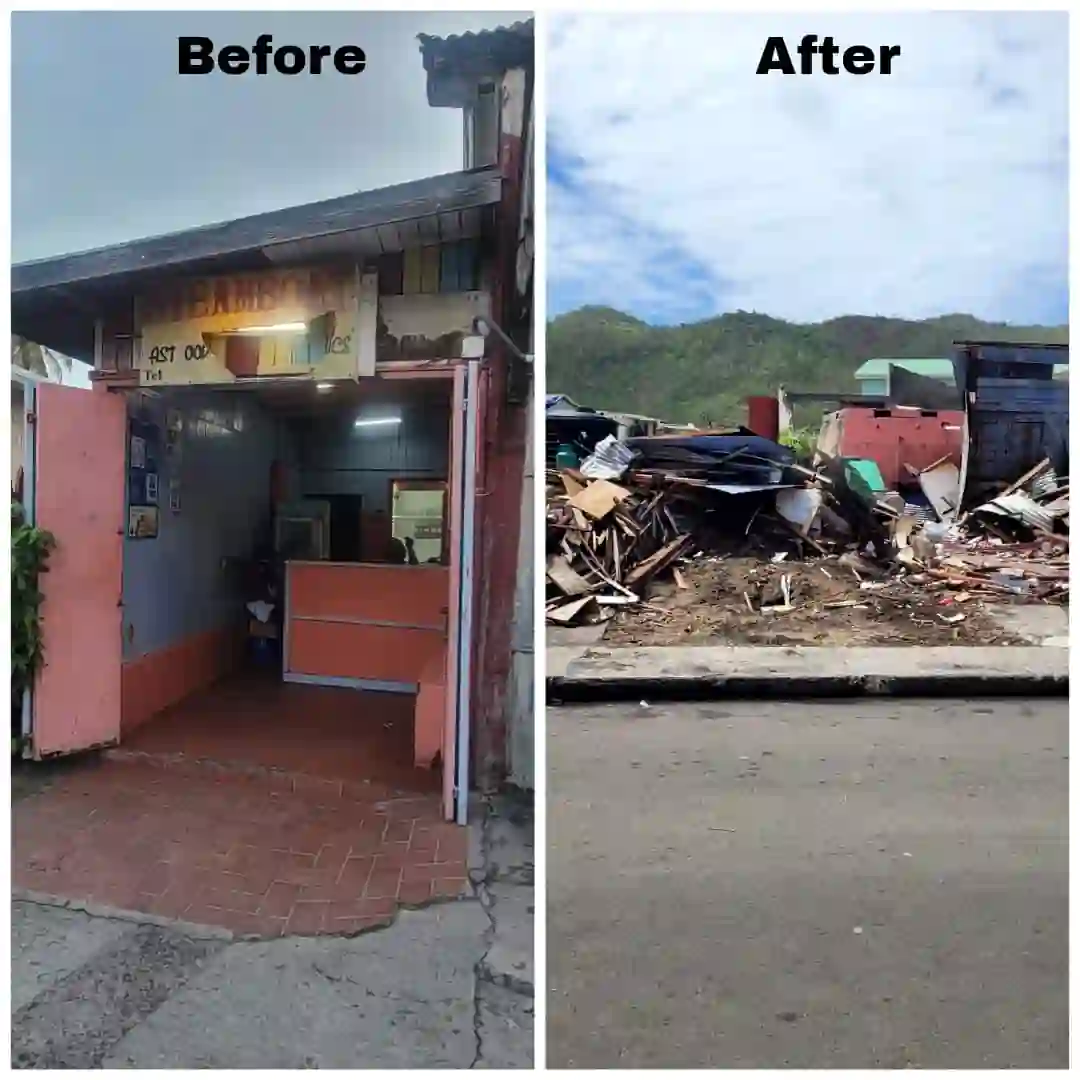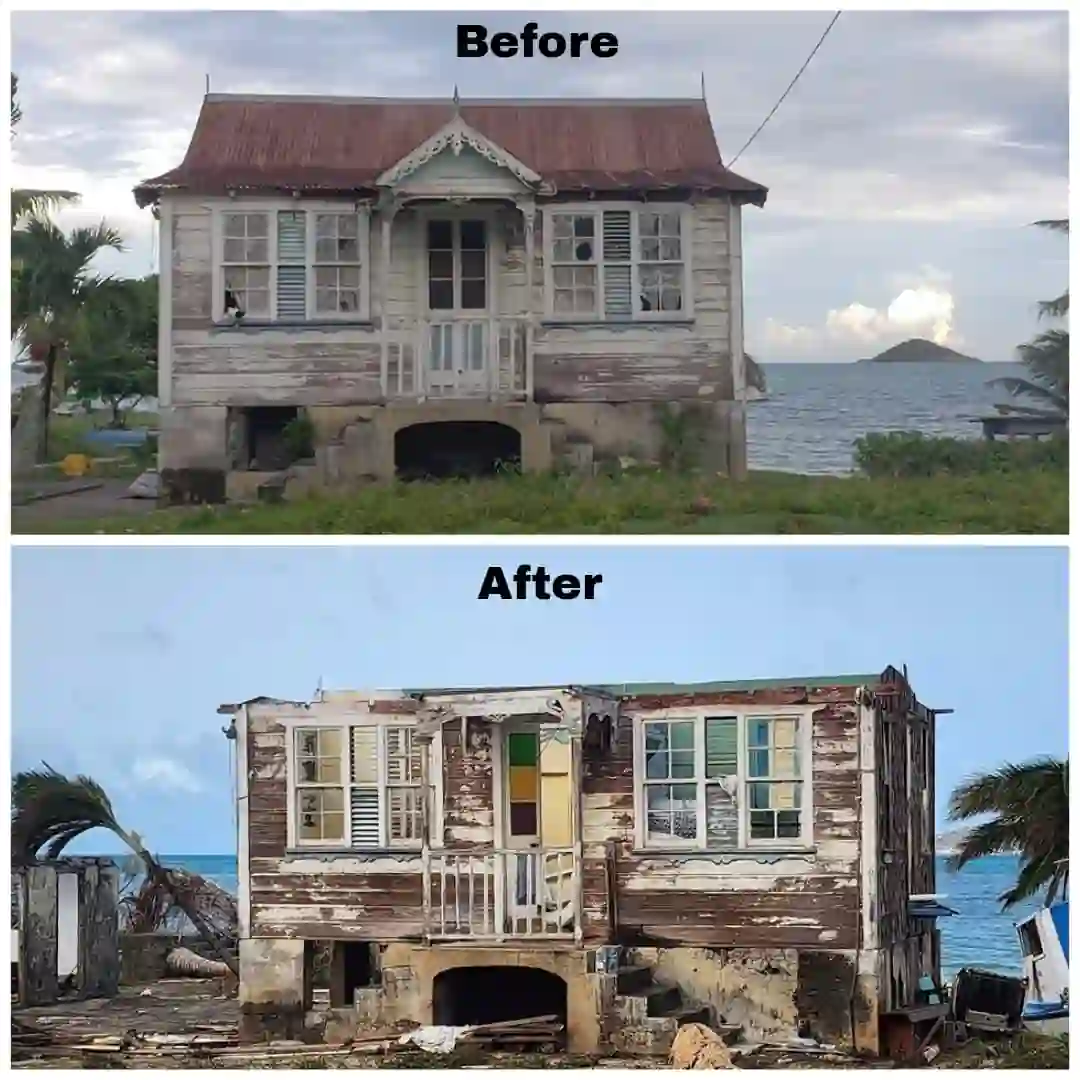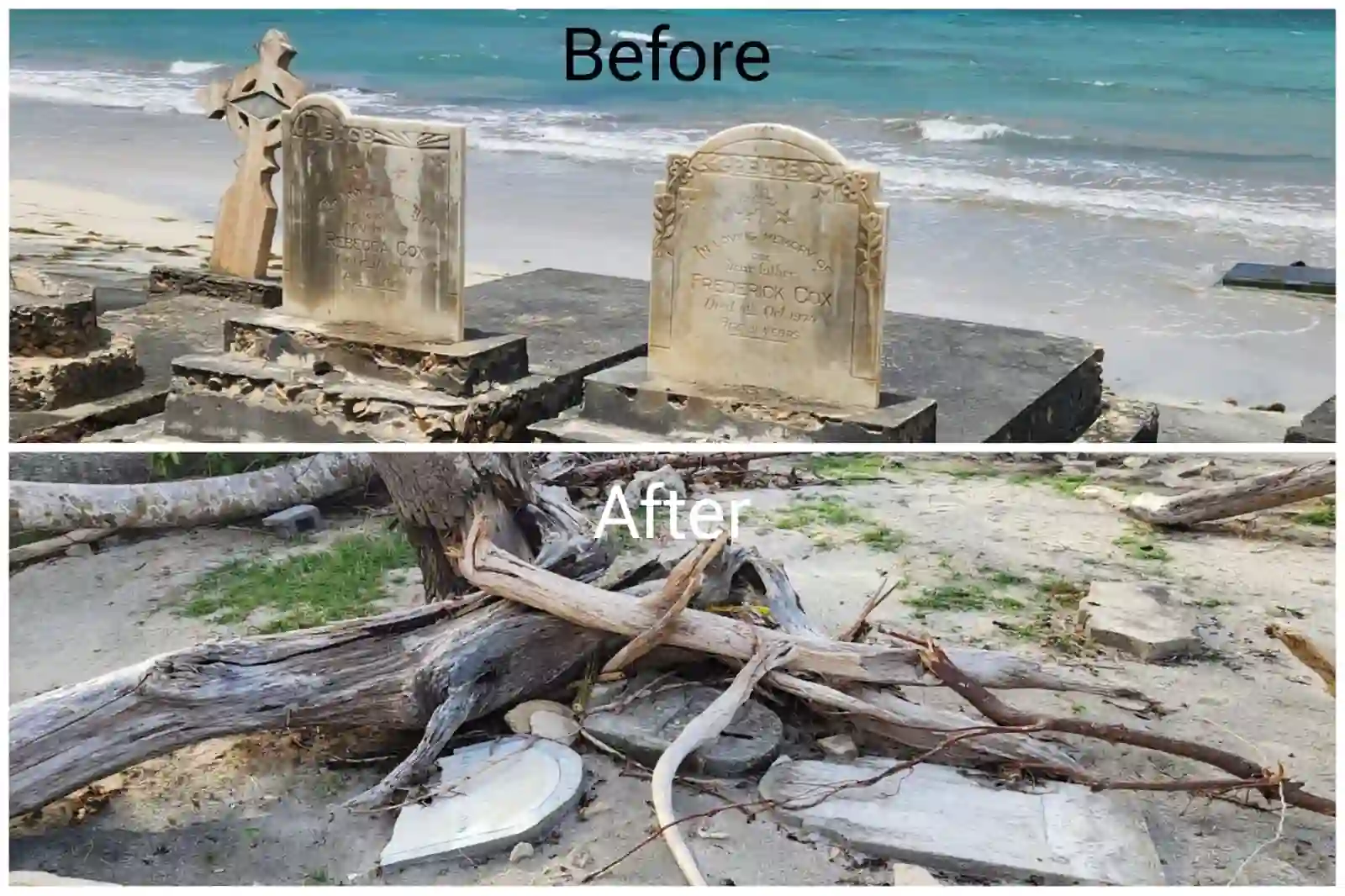Carriacou, Grenada: Tibeau Cemetery- one of the oldest cemeteries in Carriacou was devastated by the wrath of Hurricane Beryl one month ago. Almost every grave was either covered in sand from high tide during the storm, washed into sea or damaged from strong winds.
Now, the site, which was famous among the tourists, locals, citizens and residents has been buried under the sand and sea due to the fury of nature. The first hurricane of the season- Beryl has turned out to be massive storm as even after one month, the assessment of the damage has not yet been completed.
The cemetery was formed part of the Limlair estate where some of the tombs dates back to mid 1800. The government has also considered it the heritage of the country as the tourist places are known for their hotspots.
Due to the climate change and hurricanes, the hotspots have been destroyed and caused massive loss to the country and its tourism sector.
Other major infrastructural damage in Carriacou
The houses in Carriacou are not in the condition of the accommodations after getting crushed in the storm force of Hurricane Beryl. Calder’s house on Victoria Street Hillsborough explained the entire story of devastation as after Hurricane, the house turned into pieces of wooden which is not even recognizable.

The renowned Belair Historical Park, also known as Maroon Village, has turned into a desolate place as the stages and other cultural rooms have been broken.

The small shop on the street named Kayan Fry Chicken was wrecked and lost its existence at the particular place due to Beryl.

The most famous tourist place- Scottish design house that everyone enjoyed viewing while vising Carriacou did not remain house anymore. It turned into the remains of the house as the roof has been flown away and the entire structure crumbled with the passage of Hurricane Beryl.

After one month- Hurricane Impact
It has been over one month for the passage of Hurricane Bery, but Carriacou is still in the phase of the dismay as there is no way to start over again. The devastation assessment is underway, and the locals are in dilemma about where to start recovery measures.
From tourism to the agriculture sector, from infrastructure to basic amenities, from livelihoods to small businesses, every sector has faced the wrath of nature. People lost their homes, and the alarming situation arose when the government started exploring accommodations on rent for their citizens.
Even after one month, the airport did not return to normal operations as the recovery work is still underway, disrupting the connectivity and travel.
Who is responsible
The 47th meeting of the CARICOM is underway in Grenada as the chairmanship will be given to Prime Minister Dickon Mitchell. During the meetings, the leaders gathered and talked about the impact of the Hurricane Beryl and the devastation faced by Grenada.
The leaders talked about climate action and expressed disappointment with the role of the developed world. They stressed that the devastation was caused by climate change and the emission of carbon, and the question was raised that who is responsible for this destruction.
According to the report of the United Nations, small island states like Grenada are not even 1% contributor to the climate change that cause huge destruction across the globe. However, most of the consequences of climate change are usually being faced by these SIDS due to their geographical locations.
The report also stated that the developed world is the major contributor to carbon emission, and they should be held responsible. UN Chief Antonio Guetters also asserted that the small island states are the major victims of the climate chaos, rising sea levels and land degradation, urging the developed world to increase climate financing.
He also noted that this is the duty of the international community to deal with the challenges faced by the small island states.
Notably, the SIDS also won the case in the International Tribunal for the Law of the Sea as the ruling stated that the nations signed on to the sea convention have a legal obligation to reduce the marine pollution linked to greenhouse gas emissions.
Climate change is the reason for the work done by the developed world, but consequences due to the issue have been faced by the small island states which is considered injustice. Now, the issue is becoming a threat to the survival of the SIDS and their people.







